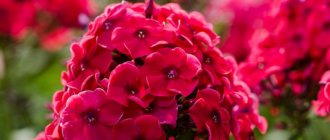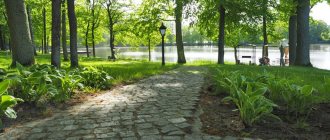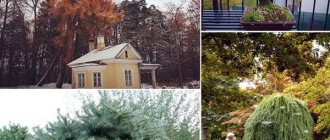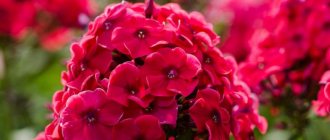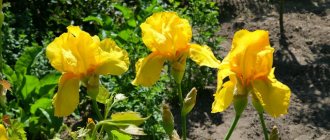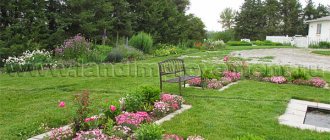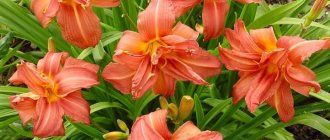A beautiful and well-kept yard with many flower beds, alpine slides, rose gardens, and rock gardens always looks stylish and original. None of the owners of personal plots even have a question about what flower beds are needed for. After all, they are really capable of highlighting any landscape design and becoming its main decoration.
You don't have to be a professional gardener to make colorful flower arrangements in your garden. It is enough to have a rich imagination, know the basic principles of forming flower beds, understand what a flower bed is, and have an irresistible desire to create truly colorful and vibrant flower beds.
In this article we will look at what types of flower beds there are, how they differ from each other, how to choose the right plants for their formation and much other useful information.
What is a flower bed
A flowerbed is a flower garden of regular geometric shape. They are usually placed in squares, front areas, in the middle of lawns in the yard, at the intersection of garden paths, and so on.
Many newcomers to the field of gardening believe that a flower bed and a flower garden are one and the same. Professionals in this field place the main emphasis on the fact that a flower bed is something that has a geometric shape with a closed circle and always has a raised surface, and annuals are mainly used for planting on them. A flower garden is a limited area of land on which ornamental plants are planted. In size they can be both large and small, and in shape - strict, classic, without obvious contours.
Flower beds are especially popular when arranging country cottages and dachas. They are selected to match the general style of landscape design. A well-chosen flower garden is very beautiful. In addition, with the correct selection of plants, gardeners will not have problems caring for flowers. As a result, from year to year they will delight not only their owners with colorful and elegant flowering, but also passers-by, neighbors, and guests.
When forming flower beds, gardeners often use various flowers (annuals, bulbous perennials), and flower beds are also supplemented with all kinds of shrubs, pine needles, ferns and even decorative dwarf trees.
About planting patterns
Following the rules of good landscape design, which most often coincide with the currently fashionable direction of Feng Shui, it is necessary not so much to transform nature as to adapt to its characteristics. Achieving natural harmony and organically incorporating existing buildings and decorative elements into our design, with our own hands we build a saving refuge from the everyday hustle and bustle.
“After all, every garden is a landscape, and it is unique, it is modest or rich - I admire it equally, gardeners should be artists!” This is how the French poet Jacques Delisle outlined the creative task.
In the coming long winter evenings, it makes sense to properly prepare for creating your garden and flower beds. Study existing literature, the experience of ordinary gardeners. Plan on paper where and what flower beds at your dacha you will be able to plant with your own hands next spring.
Types of flower beds
By variety, the following types of flower beds are distinguished:
- carpet _ They have a rectangular or square shape and are usually planted with low-growing crops. Thanks to flowers and plants with variegated and multi-colored leaves, quite original and unusual ornaments and patterns are created. Plants chosen for such plantings are the first to bloom and the last to bloom. Consequently, such plantings bloom all summer, which pleases their owners;
- regular and irregular flower beds. In regular flower beds, all crops bloom and fade at the same time, in the second - in turn. That is, an irregular flower bed blooms almost all summer;
- monoflowers . This is the simplest option, which involves planting plants of one type.
Border
From French, “border” is translated as “border,” and it is this function that is performed by a low and dense border, consisting, as a rule, of identical plants. The width of the border does not exceed 0.5 m, and the height of the planted plants ranges from 20 to 40 cm.
The border is most often made up of one type of low-growing compact plants, which are called border plants. Border plants should contrast in color with the main decorative species planted in the flower garden.
Both annual flower crops and low-growing perennials are used for borders. Borders border the contours of flower beds; they are located along paths or along the border of the lawn.
Landscape flower beds
They are somewhat reminiscent of wild flower beds, as the plants feel free in them. To form landscape flower beds, unpretentious flowers are selected, which quickly grow and turn into lush thickets.
Important : landscape flower beds only look like wild thickets in appearance. In fact, the process of their growth is strictly controlled.
By variety, landscape flower beds are divided into:
- water flower beds , which are flower arrangements framing the banks of reservoirs. For their planting, moisture-loving plants are selected;
- decorative vegetable gardens . They are plantings in which both vegetable and ornamental crops are planted. They are distinguished by clear shapes and symmetry;
- irridaria . These are flower beds completely planted with irises. They are medium in size and are usually created only by iris collectors.
Container gardening
Currently gaining popularity and widespread use. Compact, neat containers with a carefully selected assortment of flowers are good because they can be easily replaced if the plants have lost their decorative properties, or installed at the beginning of summer with already flowering plants.
When choosing floral and decorative foliage plants, you should definitely take into account the material, shape and color of the container.
Mixborders
A feature of mixborders is the absence of clearly defined forms. These flower beds are formed inside lawns, along ponds, and on hillsides.
Mixborders are planted from flowers, herbs and shrubs in such a way that the object blooms continuously, starting from early spring and ending in late autumn.
Attention: the width of the mixborder should not exceed twice the height of the tallest plant on it.
When creating mixborders, there is neither symmetry nor any specific order of planting. The main thing is that the flowers combine beautifully with each other and get along well with each other.
What types of mixborder flower beds are there? They can be either monochromatic (here one color is chosen, but in different shades), or colorful and multi-colored. Flower beds in a soft pastel palette look very noble and elegant.
Arrays
Large-scale flower beds, the area of which is at least 80 m2. They are very impressive in parks, especially on slopes or near ponds.
To create arrays, perennials that do not require constant care are used (oriental poppy, lupine, various asters, ornamental grasses, mainly cereals). Both single-color and two-color arrays look good, especially those composed of plants of contrasting colors, such as white and purple crocuses, purple asters and goldenrods, etc.
Rockery
It is a small rocky garden that fits harmoniously into the modern landscape. The peculiarity of the rock garden is that it skillfully combines the natural beauty of stones and plants.
By the type of flower garden, a rock garden is somewhat reminiscent of a rock garden, but unlike it, it is located only on the plain, and absolutely any plants are used for planting on it.
By variety, rockeries are divided into:
- Japanese _ They use more rocks than plants. These types of flower beds in landscape design are distinguished by their originality and harmony;
- European . They cleverly combine rock slides with colorful vegetation;
- English _ When planting them, conifers are mainly used.
Site layout
The correct layout of a suburban area is the basis for development and landscape design. First of all, the site is zoned. First, three main zones are distinguished, which differ from each other in percentage terms:
- residential area – 10% of the area;
- outbuildings – 15% of the area;
- garden area - up to 75% of the area.
The area allocated for the garden is also divided into small zones, which can be limited by borders of bushes, decorative compositions or light structures with vertical gardening. What stands out here is a corner designed for relaxation, a playground for children and a place for sports. The site plan must be drawn up on paper. This will allow you to correctly position all the elements that will be located on the site, as well as try out different layout options.
Find out how to beautifully decorate an arch in your garden plot in this article.
Floating flower bed
Floating flower beds are also at the peak of their popularity. They are based on a float formed from porous materials, to which the container is attached.
Attention : thanks to the development of modern technologies, gardeners can grow not only floating flower beds, but also entire gardens.
Beginners are advised to start designing such flower beds with the simplest things:
- Take a flat base.
- Pour a small layer of soil into it.
- Plant moisture-loving flowers (sedge, daylilies, silvertails) in the container.
- Place containers in a pond, reservoir, decorative pool.
Rabatka
These flower beds are similar to rectangular beds. They are usually planted along alleys, garden paths, and elongated architectural buildings. With the help of extensions, it is beneficial to divide the internal space into separate functional zones.
Attention : the minimum width of the flower bed is 50 cm. A flower bed with dimensions of 50 cm by 150 cm is considered ideal.
According to types, discounts are divided into:
- unilateral _ They are planted along fences because they are attractive on one side. The tallest crops are placed in the background; the low crops are placed in the foreground.
- double sided They are used to separate wide alleys and driveways. It is customary to plant plants of the same height in them, starting with the largest in the center and ending with the stunted ones at the edges.
In order to create a beautiful and proper garden, you need to draw up a planting plan. Flower beds with a pattern in the center look very original.
Parterres
Once upon a time, parterres - flower beds (you can see what they are in the photo) decorated palace parks, and today they are often found in modern landscape designs. The stalls are distinguished by a clear structure and well-designed layout. To create them, only ornamental plants are selected, which are planted in dense groups and form simple or complex patterns.
Important: stalls are located only in the front area in front of the house. That is, in the place where they will be best visible.
Front garden
They are flower beds between houses and the outer border of the garden. They are the calling card of the owners and emphasize not only taste preferences, but also social status.
Front gardens according to their design features are divided into:
- open . They are small in size. It is customary to decorate houses with them, creating beautiful and bright pictures of flowers;
- closed . They are formed in such a way that all the beauty is directed towards the house. They are usually placed if the house is located close to the highway (this helps reduce the noise coming from cars passing by);
- formal _ Such flower beds are used in cases where there is absolutely no space for planting flowers. They are planted in containers and displayed near the entrance area;
- covered . Typically, these types of flower beds are lawns separated by living fences made of rosehip, barberry, and hawthorn.
Arabesque
This type of flower garden involves planting plants in such a way that when they bloom they form the outline of an insect, animal or bird. It’s quite difficult to make such a composition of flowers yourself without any special skills. To be more precise, it is almost impossible. After all, not every professional flower gardener can create a beautiful and correct arabesque, not to mention novice gardeners.
The peculiarity of creating an arabesque is that it requires a fairly impressive area. In addition, the flowerbed needs proper and regular care (removing dried leaves and stems, timely pruning of branches, removing broken flowers).
Attention : when caring for an arabesque, you have to constantly ensure that the plants do not spread beyond the boundaries of the contour.
To create an arabesque, ground cover plants no more than 15 cm high are used. Planting gatsania in such a flowerbed is considered the most ideal.
Basic requirements for plants for a flower bed
When forming flower beds, it is worth considering certain properties of flowers:
- their decorative value during the flowering period and appearance during the dormant period;
- flowering period;
- resistance to weather conditions;
- ability to adapt during transplantation.
For example, if flowers have fragile stems that easily break from heavy rain or wind, they should not be planted in a flower bed, as they will simply ruin its aesthetics. Gladioli are a good example for this. Although these flowers are unusually beautiful in themselves, they do not belong in flower beds. But marigolds, daisies, and pansies will look perfect in any type of flower bed.
Compositions with stones
Depending on the circumstances, stones can be regular or irregular in shape. In a classic garden, round or square stones or slabs will look great. Natural stones look even better in other parts of the garden, in flower beds.
Note!
Flowers for a flower bed - 140 photos of the most beautiful and unpretentious flower options for a summer cottage
Fast-growing climbing plants for the fence and garden - a review of the best types (120 photos). Instructions: how to select and plant climbing plants
How to arrange a front garden: tips, ideas, practical advice. Planting beautiful flowers in front of the house (instructions + photos)
Separately located stones have a place everywhere, not only on the lawn or border. But it is necessary to secure them well so that they are safe.


